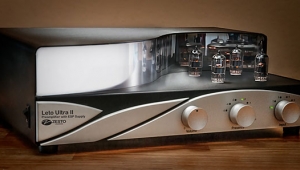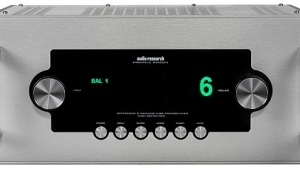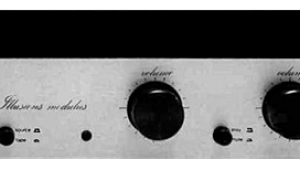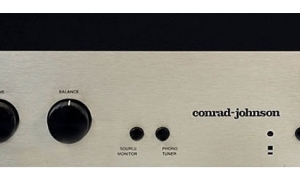| Columns Retired Columns & Blogs |
Herron Audio VTSP-1 preamplifier & VTPH-1MC phono preamplifier
This is an era in which products and websites are "launched," but in the past two years Herron Audio has sort of oozed its way into the public ear. With little visible promotion or splashy advertising, Herron is now spoken of within an ever-widening audiophile circle.
 This is so for a number of reasons. For one, founder/designer Keith Herron is conspicuously present on Internet newsgroups, where he usually displays impressive technical expertise tempered by an appreciation for good sound. For another, he makes an interesting pair of front-end products that have garnered the loyalty of "early adopter" audiophiles---the kind who discover and are willing to take a chance on new brands. There was a time, after all, when "Mark Levinson" was just some guy's name.
This is so for a number of reasons. For one, founder/designer Keith Herron is conspicuously present on Internet newsgroups, where he usually displays impressive technical expertise tempered by an appreciation for good sound. For another, he makes an interesting pair of front-end products that have garnered the loyalty of "early adopter" audiophiles---the kind who discover and are willing to take a chance on new brands. There was a time, after all, when "Mark Levinson" was just some guy's name.
Will "Keith Herron"---who has a degree in electrical engineering from Iowa State University, and who has worked extensively in pro audio, with R&D directorial credits at Ampeg, Crate, and Audio Centron---remain just a man, or will he eventually become a brand name? Keep your tubes warm.
VTSP-1 line preamplifier
No awards here for cosmetics or industrial design: the $3650 VTSP-1, with its black faceplate, white silk-screening, and three large silver knobs (input, volume, balance), is visual meat'n'potatoes: pure functionality cleanly rendered. The preamp accepts up to six unbalanced line sources and features a handy Stereo/Mono switch, as well as Tape Monitor and Mute. A lineup of three LEDs monitors power, filament readiness, and output availability. The rear sports two neat rows of chassis-mounted, hard-wired, TIFF gold-plated input and output jacks (two Main, one Tape), a grounding post, an IEC AC jack, and two rocker switches: one for power, the other to reverse AC polarity to minimize line/ground noise.
From the outside, the compact preamp seems to be reasonably well built and operationally conventional, but much of what's going on under the hood is far more complex. For instance, the smooth-feeling volume control is really a control for a pair of 128-position stepped attenuators consisting of 128 precision resistors and electronic switches on a single chip. The DC signal from the volume pot controls a Herron-designed servo system that directs the positions of the two attenuators. So though it feels like a very smoothly spinning volume pot, it's anything but---and anything but as simple as I've just described.
- Log in or register to post comments




































